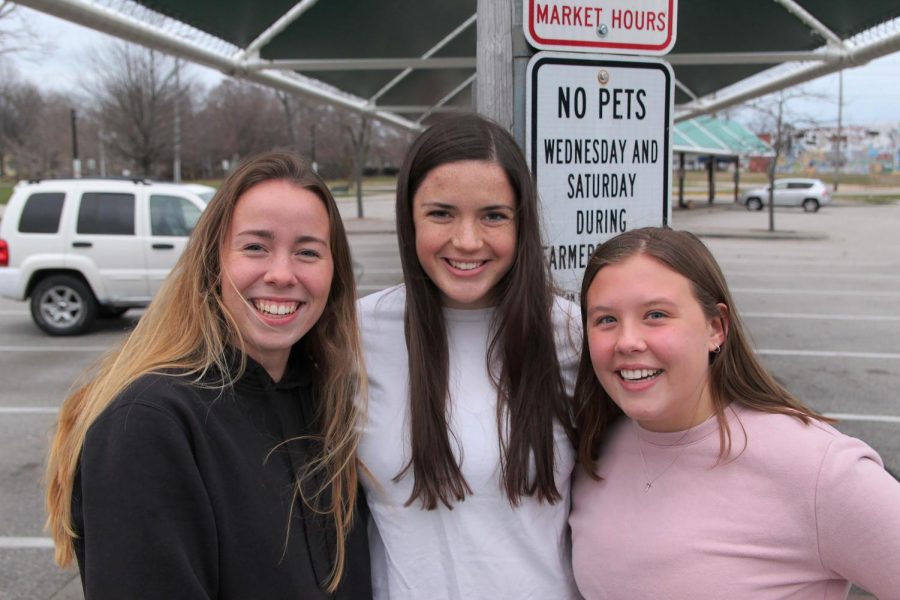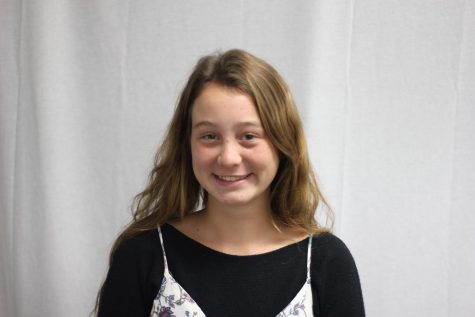Beyond the Pier produces plentiful plans
The Grand Haven High School Student Senate is participating in the Beyond the Pier project. This project will remodel different spaces in the downtown.
December 7, 2020
It’s not every day that students get the opportunity to design the layout of their town. And not a simple “I’d like to see this here” brainstorming session. Somewhere along the lines of unrestricted ideas, an open template, and most importantly, an unlimited budget. More like a video game.
But this is the rare opportunity that was presented to senior Peyton Brill and the rest of the student senate. In early August, teacher Brain Williams, who is involved in lots of project-based learning, was asked if he knew students that could be involved in the renovations around downtown Grand Haven. The answer was an enthusiastic yes.
Williams is an involved advisor of the student senate. Not knowing how COVID-19 restrictions were going to impact student’s ability to get involved in the community, he offered the project to see what ideas they would come up with.
“This project gives you opportunities to learn stuff in a way that’s unique, in a way that you maybe haven’t learned before,” Williams said. “It allows you to be super creative. Potentially even figure out career options.”
Split into nine groups, the members of the senate were responsible for coming up with ideas to fill various spaces of the downtown. This project, titled Beyond the Pier, encompasses different locations and various types of people. Areas such as the former Chinook Pier, farmers market, and Lynne Sherwood Waterfront Stadium were up for discussion.
The aim for Brill and her peers: make the downtown attractive and accessible to all.
“Our main goal was that we wanted it to be a family thing so everyone can be involved and everyone wants to be there,” Brill said. “We just wanted to add more stuff that’s outside because we have such a beautiful town and all these outside areas that are not being used right now and have the potential to be used while still preserving what it is but still making better use out of it.”
Coming up with proposals was no easy feat, especially when few students had backgrounds in architecture and design. However, many groups looked to nearby locations for inspiration; take for example Rosa Parks Circle in Grand Rapids. Among the ideas were an ice skating rink, year-round farmers market venue, food truck lot, and volleyball nets.
The groups were given feedback by different members of the community, one of which was William and Works, an engineering company that is helping the city prepare for their redevelopment. It was a crucial role in the process to get student input into the planning.
“The reason we like to do this (involve students) is because when we put together these planning documents, sometimes things don’t happen for a while” Maleah Rakestraw, a Landscape Urban Designer for William and Works said. “The idea is that as we are incorporating you in the process and we’re listening to what you have to say, you might want to stick around in those communities for a long time. You might want to raise your family and start businesses in Grand Haven. Not only is it a way to get you guys involved, but it’s a way there for you guys to kind of feel ownership over the place that you live.”
Feeling involved and a part of Grand Haven aren’t the only benefits of including student ideas in future plans.
“Students and that age group are a little bit more open to change than people who have lived here for a long time, and I don’t see that as a bad or a good thing,” Rakestraw said. “It’s just you have a vision for what Grand Haven could be, that’s a little different.”
Brill’s group, along with two other groups, were chosen as finalists by the student senate on October 15. And although the initial planning of the project seemed limitless, reality soon set in.
“There was an unlimited budget, but for me, it was more of what can we do to take what we have and put it back in and offset the cost?” Brill said. “We have an unlimited budget but all those things we spend money on could go to other places too. It was trying to improve the area while also trying to keep a lower budget.”
Budgeting wasn’t the only challenge students faced. Creating unity and partnership in a time where everyone is required to stay six feet apart was a trial and a reward in itself.
“It was kind of tough at first, but then you kind of understand how to work with the group, and understand when people say stuff kind of what they mean,” senior Emma Laws said. “You learn how you can just kind of build off each other.”
Senior Maggie Walsh felt the same pressure of working in a new group.
“There was a lot of team building and a lot of detail that went into it,” Walsh said. “With everyone’s different ideas, you had to really work together to narrow things down and come up with the best compromise.”
Although there were challenges, the students of Grand Haven have embraced the opportunity to cement their ideas into the town for generations to come. That type of responsibility comes with enormous consideration and reflection.
“I think it’s so cool because the rebuild will last for generations,” Walsh said. “
.”The project will be completed in 2022. It will change both the trajectory of Grand Haven and the trajectory of these students. It will open their minds to not only the endless possibilities of what the town could become but also to what they could become.
“I think it’s really exciting and this isn’t an opportunity that comes around all the time,” Brill said. “To know that we can have an impact and our voices can be heard is super inspiring and helpful for when we work on projects in the future.”




Linda Williamson • Dec 10, 2020 at 2:29 am
Emma LAWS, YOU GO Girl!!